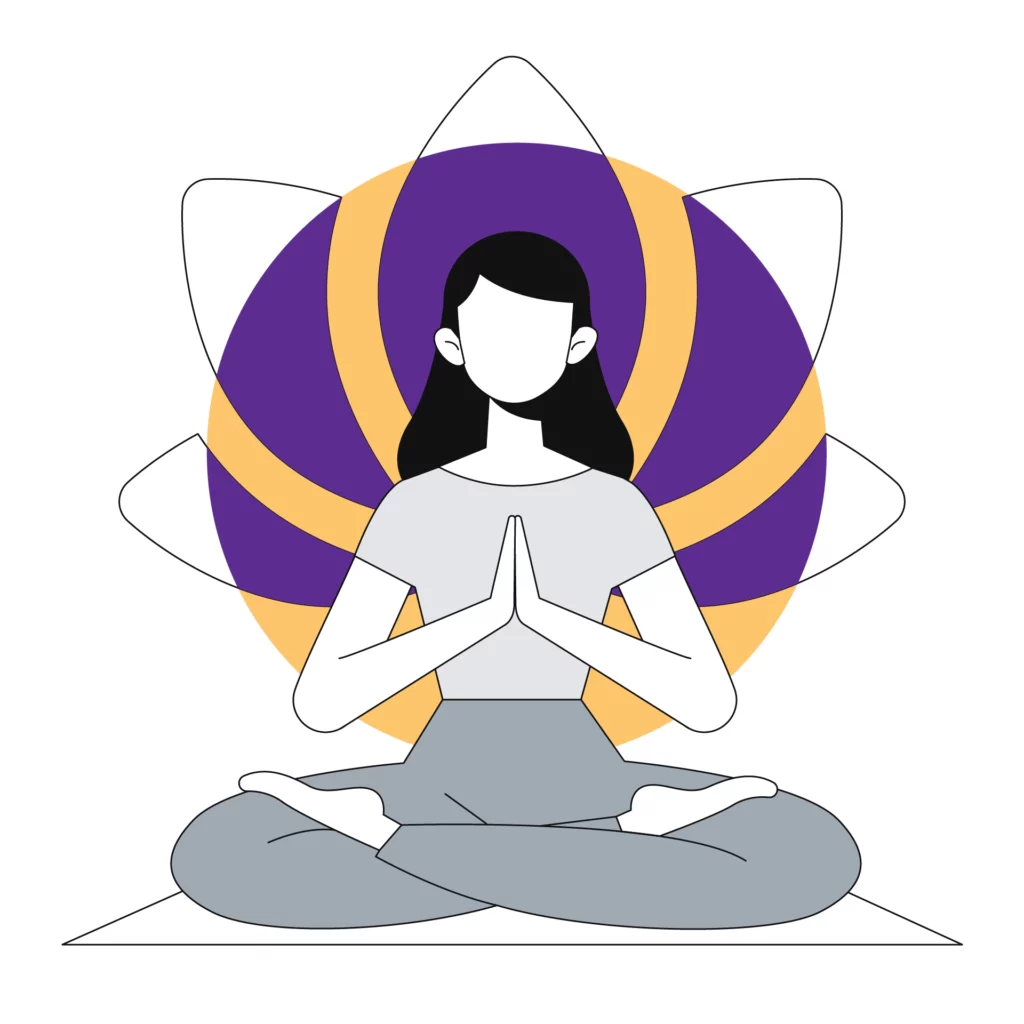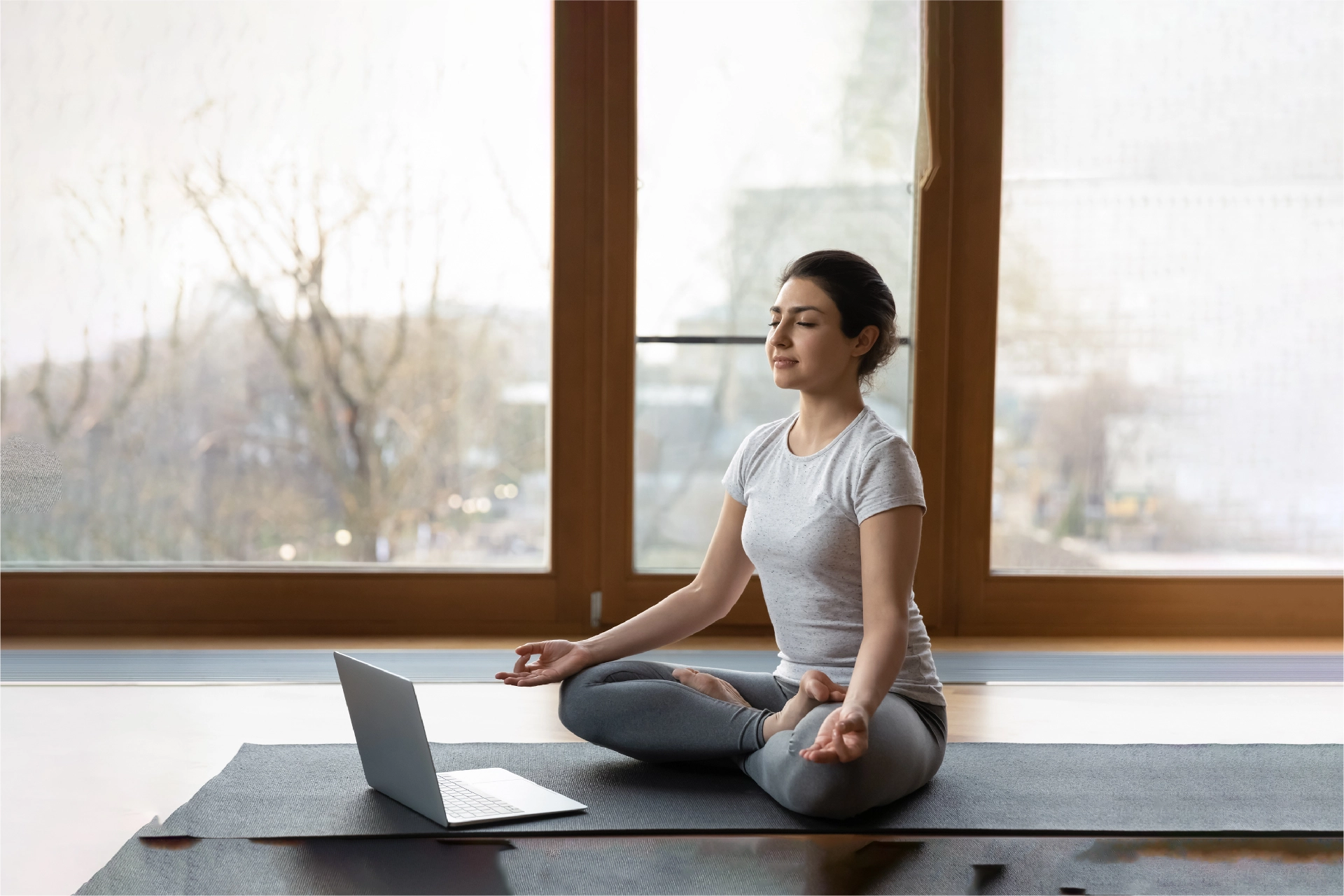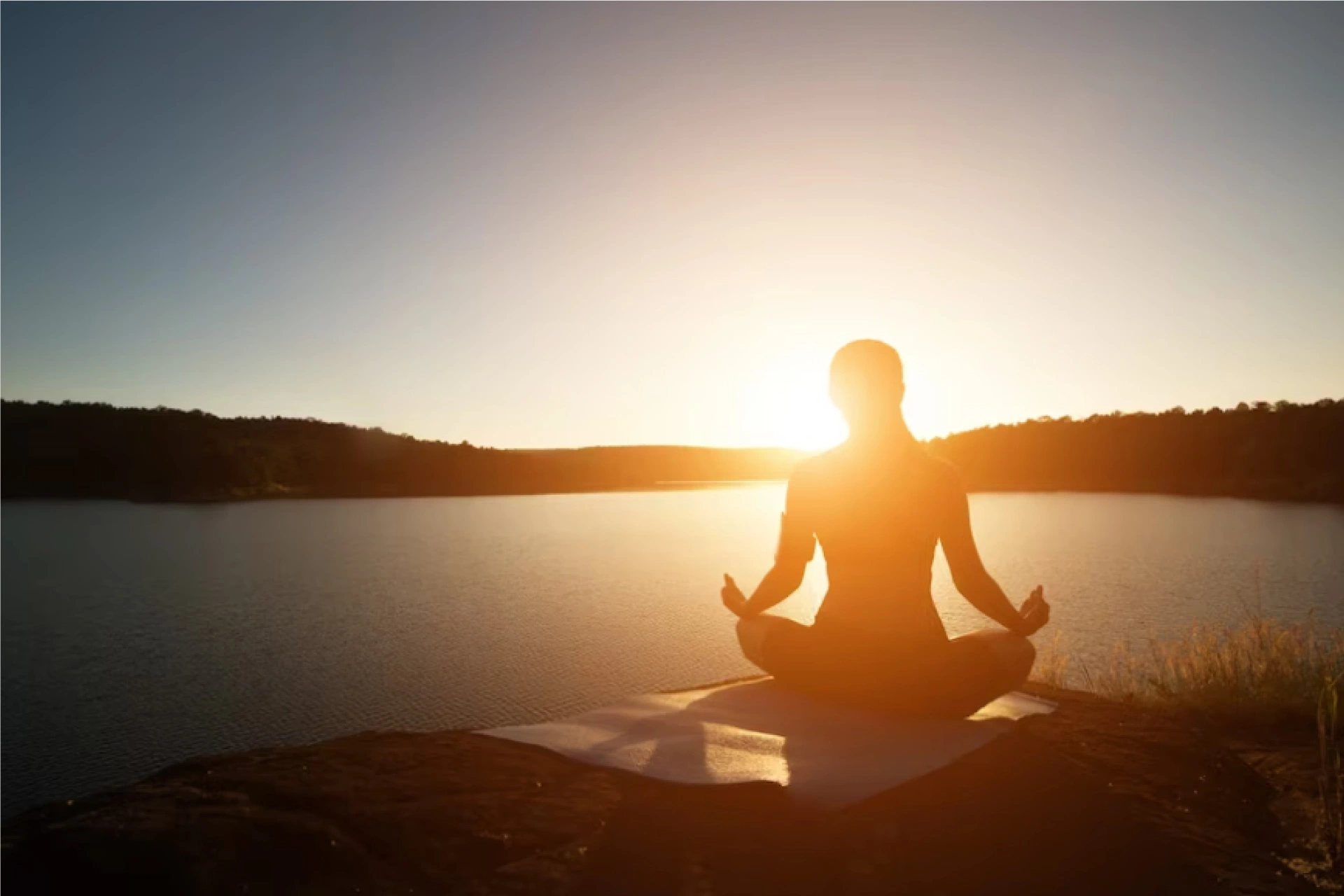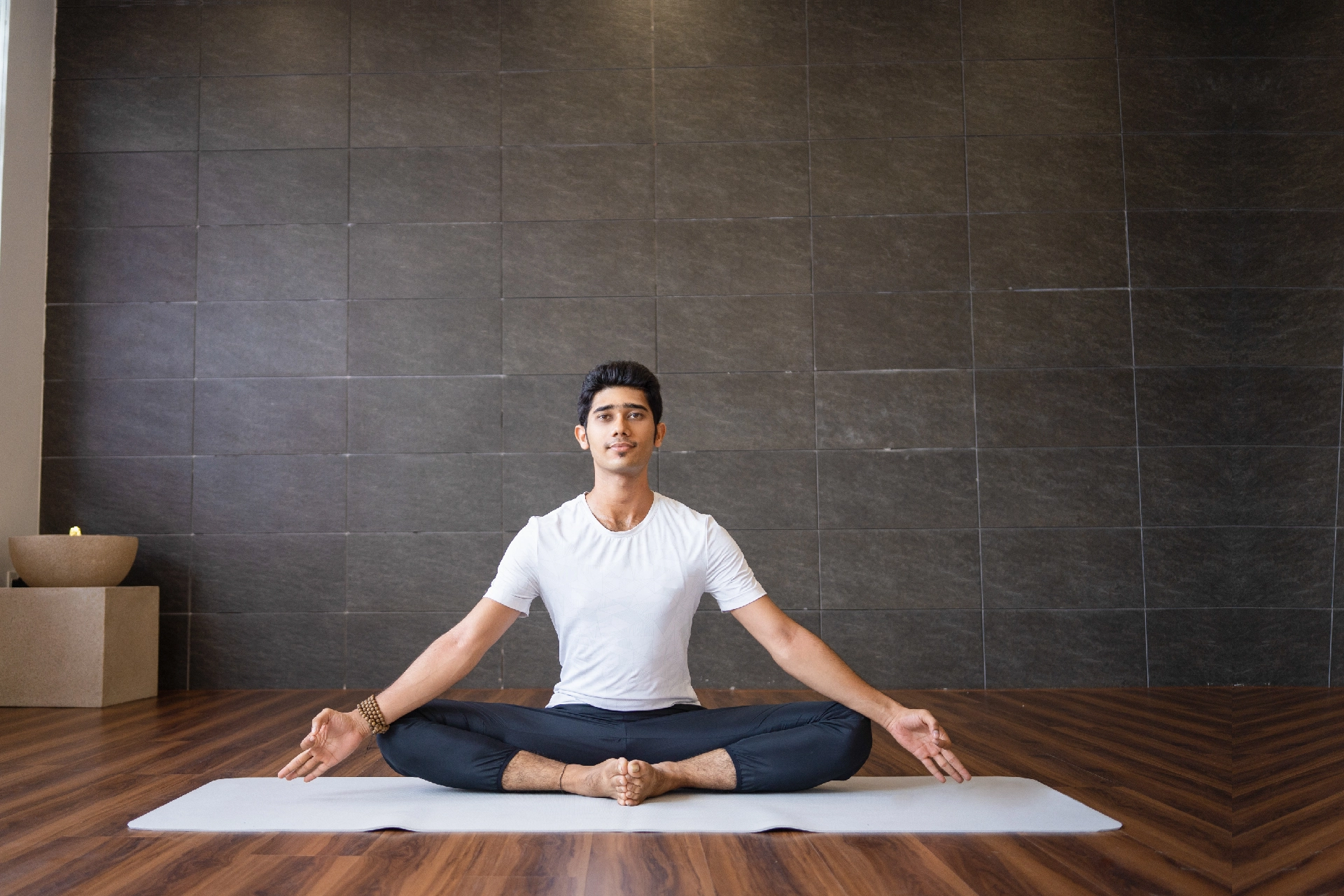Physiotherapist | 8 min read
Steps, Benefits and Everything You Need to Know About Padmasana
Medically reviewed by
Table of Content
Key Takeaways
- Padmasana helps to align the spine, thereby improving posture
- It is the most practiced meditation pose in Yoga
- Padmasana promotes better blood circulation in the body
Padmasana, also known as Lotus Pose, is a revered and commonly used meditation posture in the practice of yoga. The pose involves sitting cross-legged with both feet resting on the opposite thighs and hands resting on the knees. It is said to have both physical and mental benefits, making it a popular choice for yoga practitioners of all levels. In this article, we will explore the history and origins of Padmasana, its uses, and how to practice the pose correctly.
History of Padmasana
Padmasana is believed to have originated in ancient India and is one of the most commonly used meditation postures in yoga. The word "Padma" means lotus in Sanskrit, and the pose gets its name because the legs resemble the petals of a lotus flower. Lotus Pose is mentioned in several ancient yoga texts, including the Hatha Yoga Pradipika and the Siva Samhita, dating back to the 15th century.
In Hindu mythology, the lotus flower symbolizes enlightenment, purity, and beauty associated with the god Vishnu. It is said that Vishnu meditated in Padmasana for thousands of years, and as a result, the pose has become a symbol of spiritual devotion and is considered a sacred posture.
Physical and Mental Benefits of Padmasana
There are numerous physical and mental benefits to practising Padmasana. Here are some of the most notable ones:
Physical Benefits
- Improved posture: Padmasana helps to align the spine and promotes good posture, which can reduce pain and discomfort in the back, neck, and hips.
- Increased flexibility: The posture requires flexibility in the hips, knees, and ankles, and regular practice can help to improve flexibility in these areas.
- Better circulation: The pose helps to improve circulation in the legs, which can reduce swelling and improve overall health.
- Stress relief: Padmasana can help to relieve stress and tension in the body, as it promotes relaxation and improves circulation.
Mental Benefits
- Improved focus: Sitting in Padmasana helps to still the mind and improve focus, making it an ideal posture for meditation and mindfulness practices.
- Reduced anxiety and depression: The pose can help to calm the mind and reduce feelings of anxiety and depression.
- Increased awareness: Practicing Padmasana can help to increase awareness of the body and mind, leading to a deeper connection with one's inner self.
- Improved sleep: The posture can help to relieve stress and promote relaxation, which can lead to improved sleep patterns.
How to Practice Padmasana?
Padmasana is a simple posture to practice, but it can take time to work up to the full pose if you are new to yoga. Here is a step-by-step guide to practising Padmasana:
1. Start by sitting on the floor with your legs stretched out in front of you.
2. Bend your right knee and place the right foot on the left thigh.
3. Bend your left knee and place the left foot on the right thigh, ensuring that the soles of both feet are facing upwards.
4. Place your hands on your knees and straighten your spine.
5. Close your eyes and focus on your breathing, allowing your mind to become still and calm.
6. Remain in the pose for as long as is comfortable, ideally for 5-10 minutes.
7. To release the pose, gently remove your feet from your thighs and straighten your legs.
Additional read: Vajrasana Yoga BenefitsTips for Practicing Padmasana
- Take your time: If you are new to Padmasana, working up to the full pose can take time. Start by sitting in a comfortable cross-legged position and gradually work towards bringing your feet onto your thighs.
- Use props: If you have tight hips or knee issues, you can use props such as yoga blocks or cushions to help support your body.
- Warm-up: Before practising Padmasana, it's essential to warm up with some gentle stretching and breathing exercises. This will help to prepare your body for posture and reduce the risk of injury.
- Focus on your breath: The key to practising Padmasana is to focus on your breath and remain still and calm. This will help you to connect with your inner self and improve your mental focus.
- Listen to your body: It's essential to listen to your body and only go as far as you are comfortable. Then, if you experience pain or discomfort, release the pose and try another time again.
- Padmasana, also known as Lotus Pose, is a famous and revered posture in the practice of yoga. Yet, despite its widespread use, many myths and misconceptions about the pose exist. This section will explore some of the most common myths and facts about Padmasana.

Myths & Facts about Padmasana
- Myth: Padmasana is only for advanced yogis
- Fact: While Padmasana can be a challenging posture for beginners, it is not reserved only for advanced yogis. With patience and practice, anyone can work towards achieving the full pose. It's essential to listen to your body and only go as far as you are comfortable. With time, you'll gradually increase your flexibility and be able to achieve the full pose.
- Myth: Padmasana is a cure-all
- Fact: While Padmasana has numerous benefits, it is not a cure-all. While it can help to relieve stress, improve posture, and promote relaxation, it is not a magic cure for all ailments. It's important to remember that the benefits of Padmasana are achieved through regular practice and should be combined with a healthy diet, exercise, and lifestyle for the best results.
- Myth: Padmasana is painful
- Fact: While Padmasana can be challenging for beginners, it should not be painful. If you experience pain or discomfort, it's essential to release the pose and try another time again. If you have knee or hip issues, you can use props such as yoga blocks or cushions to help support your body.
- Myth: Padmasana can only be done for short periods
- Fact: The amount of time you can spend in Padmasana depends on your flexibility and comfort. While beginners may only be able to hold the pose for a few minutes, with practice, you can build up to holding the pose for more extended periods. It's essential to listen to your body and only keep the
posture for as long as it is comfortable.
Variations of Padmasana
While Padmasana is a powerful posture on its own, there are also several variations of the pose that can be used to deepen the stretch or target specific areas of the body. Two common variations of Padmasana include Baddha Padmasana and Ardha Padmasana.
Baddha Padmasana
Baddha Padmasana, also known as Bound Lotus Pose, is a variation of Padmasana that involves bringing the soles of the feet together and holding onto the feet with the hands. This posture is used to deepen the stretch in the hips and promote relaxation.
Ardha Padmasana
Ardha Padmasana, also known as Half Lotus Pose, is a variation of Padmasana that involves placing one foot on the opposite thigh and keeping the other foot flat on the ground. This posture is used to build strength and flexibility in the hips and legs, making it a useful stepping stone for achieving full Padmasana.
Padmasana is a famous and revered yoga posture with numerous physical and mental benefits. While there are many myths and misconceptions about the pose, it is essential to remember that it is not the cure-all, should not be painful and can be practised by anyone with patience and practice. By focusing on your breath and listening to your body, you can experience the many benefits of Padmasana.
Padmasana, also known as Lotus Pose, is a posture that benefits many people. Here are some of the groups of people who can particularly benefit from practising Padmasana:
1. People with sedentary lifestyles: Those who spend a lot of time sitting, such as office workers or students, can benefit from Padmasana as it helps to stretch the hips and improve posture.
2. People with knee or hip pain: Padmasana can effectively relieve knee and hip pain as it helps stretch and strengthen these joints. However, if you have knee or hip injuries, it's important to consult with a doctor or physical therapist before practising the pose.
3. People with stress or anxiety: Padmasana is a calming and meditative posture that can help to reduce stress and anxiety. The pose encourages deep breathing and relaxation, promoting a sense of calm and peace.
4. Pregnant women: Padmasana can be a safe and effective pose for pregnant women to practice, as long as it is done with caution and under the guidance of a qualified teacher. The carriage can help to relieve discomfort in the hips and improve circulation.
5. People with back pain: Padmasana can help to improve posture and strengthen the back muscles, reducing the risk of back pain.
6. Meditators: Padmasana is often used as a meditation posture, as it encourages stillness and stability, making it easier to focus on the breath and develop a more profound meditative practice.
Additional Read: What Is Panchakarma In AyurvedaIn conclusion, Padmasana is a posture that can benefit a wide range of people. However, it's essential to listen to your body and only practice the pose as far as you are comfortable. If you have any medical concerns, it's always best to consult a doctor or physical therapist before starting a new yoga practice.
Padmasana is a revered and commonly used meditation posture in the practice of yoga. The pose has numerous physical and mental benefits, including improved posture, increased flexibility, stress relief, and improved focus. It's essential to take your time, use props if necessary, warm up beforehand, focus on your breath, and listen to your body to practice Padmasana effectively. You can experience the many benefits of this sacred and beautiful posture with regular practice.
References
Disclaimer
Please note that this article is solely meant for informational purposes and Bajaj Finserv Health Limited (“BFHL”) does not shoulder any responsibility of the views/advice/information expressed/given by the writer/reviewer/originator. This article should not be considered as a substitute for any medical advice, diagnosis or treatment. Always consult with your trusted physician/qualified healthcare professional to evaluate your medical condition. The above article has been reviewed by a qualified doctor and BFHL is not responsible for any damages for any information or services provided by any third party.





